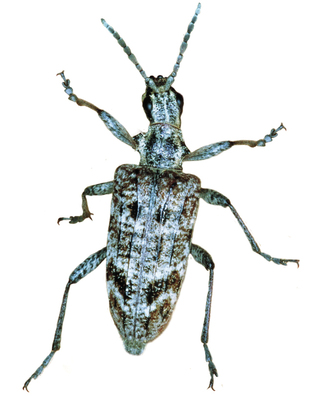 loading
loading
FindingsBeetlejuiceNature’s antifreeze.  Josef NeměcView full imageHow does the half-inch-long beetle Rhagium inquisitor survive in its native Siberia, where temperatures can drop to 40 degrees Fahrenheit below zero? The secret is antifreeze proteins. But until now, no one understood how they work. Two undergraduates, Aaron Hakim ’13 and Darren Zhu ’14, and their adviser, Yale biologist Farren Isaacs, started the research that has led to a theory. (Hakim and Zhu’s work won a gold medal in the International Genetically Engineered Machine [iGEM] competition.) The project was then picked up by a team including Hakim, Isaacs, Jennifer B. Nguyen ’14PhD, associate professor Yorgo Modis, and Wuyi Meng, a Yale research support specialist. The group—whose results appeared on the cover of the Journal of Biological Chemistry in April—analyzed the protein’s crystal structure and concluded that it includes “ice-like waters,” which match the planes of ice crystals, bind to them, and stop them from growing. The work could lead to cheaper, more effective antifreeze technologies—so that, for example, organs for transplant could be kept at lower temperatures, and therefore preserved longer, without tissue damage from freezing.
The comment period has expired.
|
|